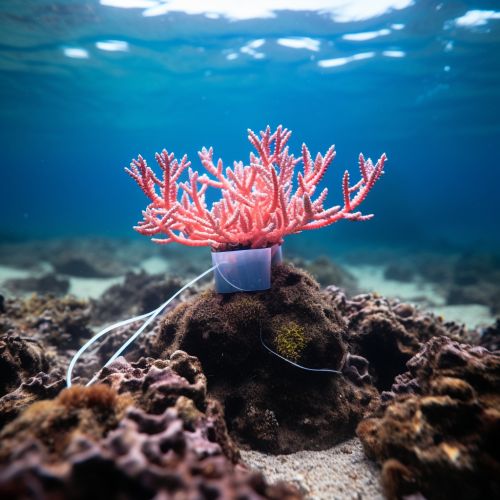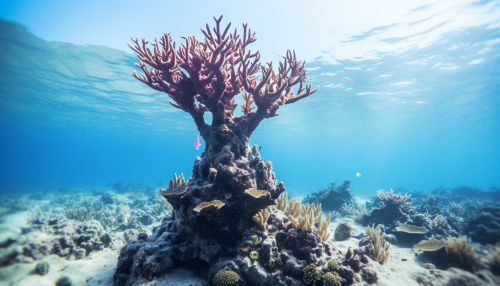Coral Transplantation
Introduction
Coral transplantation is a technique used in the field of marine biology to restore damaged or degraded coral reefs. This process involves the physical relocation of healthy corals from a donor site to a recipient site where coral cover is low or absent. The technique is often used in conjunction with other reef restoration methods to enhance the recovery of degraded reef ecosystems.


Background
Coral reefs are one of the most biodiverse ecosystems on the planet, providing habitat for a multitude of marine species. However, they are under threat from a variety of factors, including climate change, overfishing, and pollution. Coral transplantation is one of the strategies employed by marine biologists and conservationists to mitigate these threats and restore the health and diversity of these critical ecosystems.
Process of Coral Transplantation
The process of coral transplantation involves several steps, each of which requires careful planning and execution.
Selection of Donor and Recipient Sites
The first step in coral transplantation is the selection of suitable donor and recipient sites. The donor site is typically a healthy reef with a high density of corals, while the recipient site is a degraded reef where coral cover is low or absent. The selection of these sites is crucial to the success of the transplantation process and involves careful consideration of a variety of factors, including the species of corals present, the physical and environmental conditions of the sites, and the potential impacts of the transplantation on the donor site.
Collection of Coral Fragments
Once the donor and recipient sites have been selected, the next step is the collection of coral fragments from the donor site. This process involves the careful removal of small pieces of coral, typically using a hammer and chisel or a similar tool. The fragments are then transported to the recipient site, often in specially designed containers that mimic the conditions of the reef environment.
Attachment of Coral Fragments
Upon arrival at the recipient site, the coral fragments are attached to the reef substrate using a variety of methods. These can include the use of epoxy or cement, the insertion of the fragments into pre-drilled holes, or the use of specially designed coral transplantation frames. The method used depends on the specific conditions of the recipient site and the species of coral being transplanted.
Monitoring and Maintenance
Following the attachment of the coral fragments, ongoing monitoring and maintenance are required to ensure the success of the transplantation. This can involve regular checks to assess the health and growth of the transplanted corals, the removal of competing organisms, and the repair or replacement of any damaged or dislodged fragments.
Benefits of Coral Transplantation
Coral transplantation offers several benefits in the effort to restore degraded coral reefs. These include:
- Increasing the diversity and abundance of corals on the recipient reef.
- Providing a source of coral larvae for the natural recolonization of surrounding areas.
- Enhancing the structural complexity of the reef, which can provide habitat for a variety of other marine species.
- Offering opportunities for research and education, particularly in relation to the impacts of human activities and climate change on coral reefs.
Challenges and Limitations
While coral transplantation can be an effective tool in reef restoration, it also presents several challenges and limitations. These include the potential for damage to the donor site, the high cost and labor-intensive nature of the process, the risk of disease transmission, and the need for ongoing monitoring and maintenance. Additionally, coral transplantation does not address the underlying causes of reef degradation, such as climate change and overfishing, and is therefore often used in conjunction with other management and conservation strategies.
Future Directions
As the threats to coral reefs continue to intensify, the need for effective restoration strategies like coral transplantation is becoming increasingly important. Future research in this area is likely to focus on improving the efficiency and effectiveness of the transplantation process, developing new techniques for the cultivation and propagation of corals, and exploring ways to enhance the resilience of transplanted corals to environmental stressors.
